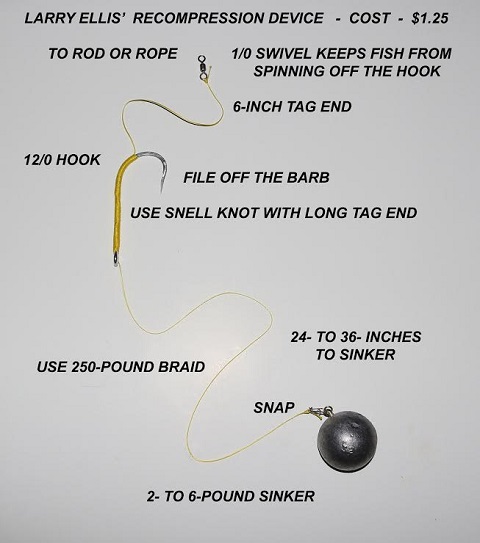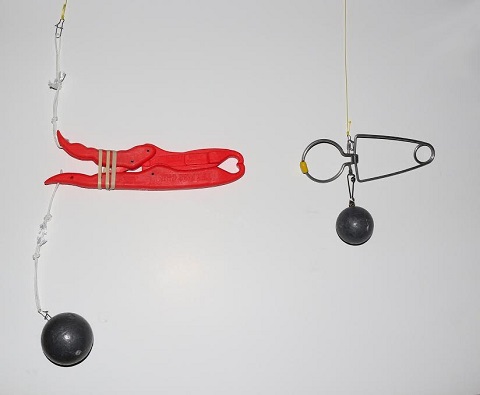Saltwater Fish Report for 12-23-2016
Rockfish Recompression Devices Part III
Chetco River - Brookings, OR (Curry County)
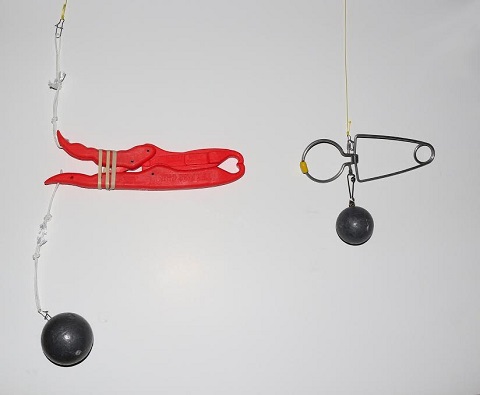
by Larry Ellis
12-23-2016
Website
As of January 1, 2017, anglers fishing for bottomfish will be required to have on board their vessel, a functional descending device.
So for the last two issues of On The Water, I featured several rockfish recompression devices which included the BlackTip recompression device ($49.99; presently on sale for $9.55), the Shelton Fish Descender ($6.00) and the SeaQualizer ($55.00).
There are three other fish descending devices not yet mentioned - the Fish Grip ($14.95), the RokLees ($29.95) and an inverted barbless hook style which I personally designed that can be made for $1.25.
These grip-type devices grab hold of the fish's lower jaw and can be lowered toward the bottom slowly without fear of losing the fish.
The BlackTip device works best with a minimum of a 3-pound sinker. As long as there is some pressure on the device, the weight of the sinker keeps the jaws of the device clamped shut on the lower lip of the fish. After the BlackTip hits bottom, the gripping device opens up and the fish swims away unharmed.
The SeaQualizer works the same way except that the jaws automatically open up at one of three desired settings: 50 feet, 100 feet or 150 feet.
The Fish Grip is a device that was modified by two Oregon charter operator to work as a descending device. The sea captains drilled a hole toward the back of each lever to accept nylon cord (shown in the picture). They then use very thick rubber bands ($2.00 a package) to keep the jaws shut. By adjusting the tension of the rubber bands, you can use any size sinker of your choice. On occasion, ODFW has been giving this product away to dedicated recompressionists.
"You can buy the Fish Grips for about $15.00 and it only takes about 2 minutes to modify them," says Lynn Mattes, Groundfish and Halibut Project Leader for ODFW. "Over the last 5 years between ODFW, OCEAN and other groups, we've given out about 15,000 of these devices."
Also look for the SeaQualizer to be given away at a select sportsman show in Salem, Oregon sometime in February by an organization called OCEAN.
"I work with an organization called OCEAN, which stands for Oregon Collation in Educating Anglers, says 10-year volunteer Hank Mills. "I've got access to devices that we're going to be giving out at the Saltwater Sportsman Show in Salem (February 25 and 26). We get enough of them through our grants with ODFW and the manufacturer that we're able to give them out to the people who come to the show at no charge, and we teach them how to use them. But we require them to sit through the demonstration before we give them one."
If you are interested in acquiring a free SeaQualizer, email Hank at [email protected].
"Put in the subject line "descender" and I'll respond to every one of them I get," says Mills.
The other grip-type device is the RokLees ($29.95) which works great for rockfish up to 3 or 4 pounds but not so great with 5-and 6-pound yelloweye.
The other devices such as the Shelton Fish Descender works on an inverted hook design. It takes a little practice in using this device but once you get the hang of it, it's a walk in the briny park. When you drop your fish to its original depth of catch, you will actually feel the fish come to life.
You will want to use about a 2- to 3-foot dropper leading to your sinker. The hook is inserted usually in the upper jaw. The trick to using this device is to hold your dropper line and sinker straight up in the air, taut to the device. Tossing the sinker to the side pulls the fish down to the bottom with it on its own momentum.
I have made several inverted hook descending devices in the past. My latest design can be made for $1.25.
Use 10 feet of 250-pound braid. Snell a long 12/0 hook so that the tag end is 8-inches long. File off the barb. You'll be winding down the shank of the hook and onto the middle curve of the hook about 115 times. After you have pushed all the winds of the line down the shank, the tag end will be slightly off center, slightly more toward the shank of the hook.
Because you have used 10 feet of 250-pound braid, you will end up with about 2 to 3 feet of dropper line coming from the hook eye. Tie a snap to the end of the dropper and attach the sinker size of your choice.
The 8-inch tag end will be tied to a 1/0 or 2/0 barrel swivel, to keep the fish from spinning off the hook. The mainline or rope is tied to the other end of the swivel.
The utilization of this inverted hook design is very similar as described for the Shelton Product.
You can use 150-pound braid to lower these devices, or you can do what Patrick Myrick of ODFW does, and use very thin rope.
"I don't know why anglers insist on using rods when using thin rope is really the only way to go," notes Myrick.
Happy recompressing!
Tight lines!
Larry Ellis, author, writer, columnist and photographer has had a 50-year passion for fishing in California and Oregon's saltwater and freshwater venues. He is a well-known writer for Oregon, Washington and California Fishing and Hunting News, Northwest Sportsman, California Sportsman and Pacific Coast Sportfishing. He currently writes monthly for Salmon Trout Steelheader Magazine, and is the author of two books, "Plug Fishing for Salmon" and "Buoy 10, the World's Largest Salmon Run." Both books can be bought from Amato Publications (amatobooks.com), Amazon and eBay. Ellis particularly loves living in his hometown of Brookings, Oregon - The heart of salmon country and gateway to fishing paradise.
Photos
More Reports
Fish descending devices part II
Chetco River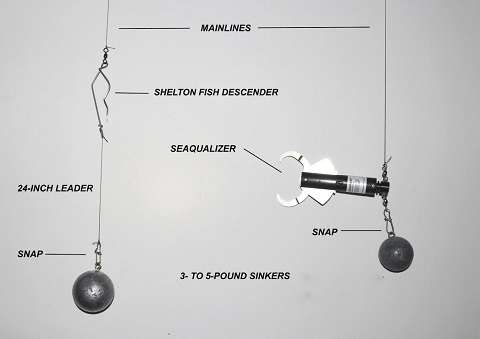
12-16-2016
Ever brought up a rockfish that looks like it has drank way too many cups of coffee? It's eyes are...... Read More
Get ready now for Oregon 2017 rockfish regulations
Chetco River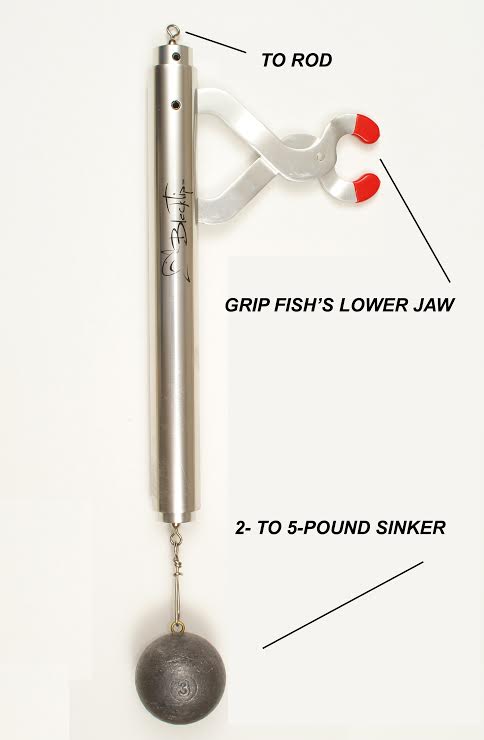
12-9-2016
There has never been a more critical time than the present to read about next year's (2017) rockfish regulations, because...... Read More

Website Hosting and Design provided by TECK.net
